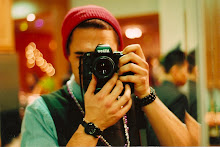honestly this was the first i've read of this book. let me start off by saying i would never sit through a crit that long. i enjoyed the first person account of being a person observing the work. the only thing i wish is that the narrator got involved in the discussion. from the gate i like the 'legitimacy' given to asher by discussing his works at the venice biennale. the commentary on crits is very accurate in that there are often awkward moments of silence where everyone seems unmotivated to be there. other times conversation is constant whether it be natural or sparked by a solitary comment. there's the people that never talk. there's the people that think they know everything. there's the people that leave. there's the people that speak whatever come to their mind. there's the people say say little but when they do its valid. crits can be awkward efforts for artists to defend themselves and other times crits can be moments of praise where the artist can remain humble or become arrogant.
this chapter extended far beyond the borders of the classroom though. it went much deeper than i expected. the commentary on the necessity of an mfa degree was nothing that i've encountered before. the discussion of what to do with that degree is a struggle that we all face and hope to endure through successfully. i was immediate shocked by the chris burden imitator. i had wondered why that photo was at the start of the chapter and thats not what i had expected. i also like that the text was applicable to the los angeles area and i found the insight to hollywood crossover interesting. i wish there was something that wide-spread in the new york area.
i also enjoy the validity of the various faculty's/artist's take on crits. there were three main 'types' of crits presented in this reading. the crit where the instructor interjects as needed. the crit where the instructor says nothing. the crit where the artist says nothing. i feel all three are appropriate in different situations. i tend to like to not say too much...or wait till the end. i thought the end was a great twist when the narrator waits till everyone leaves to re-evaluate the classroom. the thought that the student remains exist as a piece of artwork after a "post-studio" session is interesting. it's definitely a conceptual piece that could have been conceived by asher. i've seen the studio considered a piece of art but never a crit room. its art in the wake of art discussion.
some of my favorite quotes...
"creative is definitely a dirty word...it's almost as embarassing as beautiful or sublime or masterpiece."
"you go in and out of consciousness. when so many people open up your work, they say things that you never imagined, and you start to feel baffled."
"to be a great artist in the long term, you need to trust your own intuitions and instincts, whereas academia is based on rational group-think. there is a magic and alchemy to art, but academics are always suspicious of the guy who stirs the big black pot."
i dislike blog posts with no photos.


















